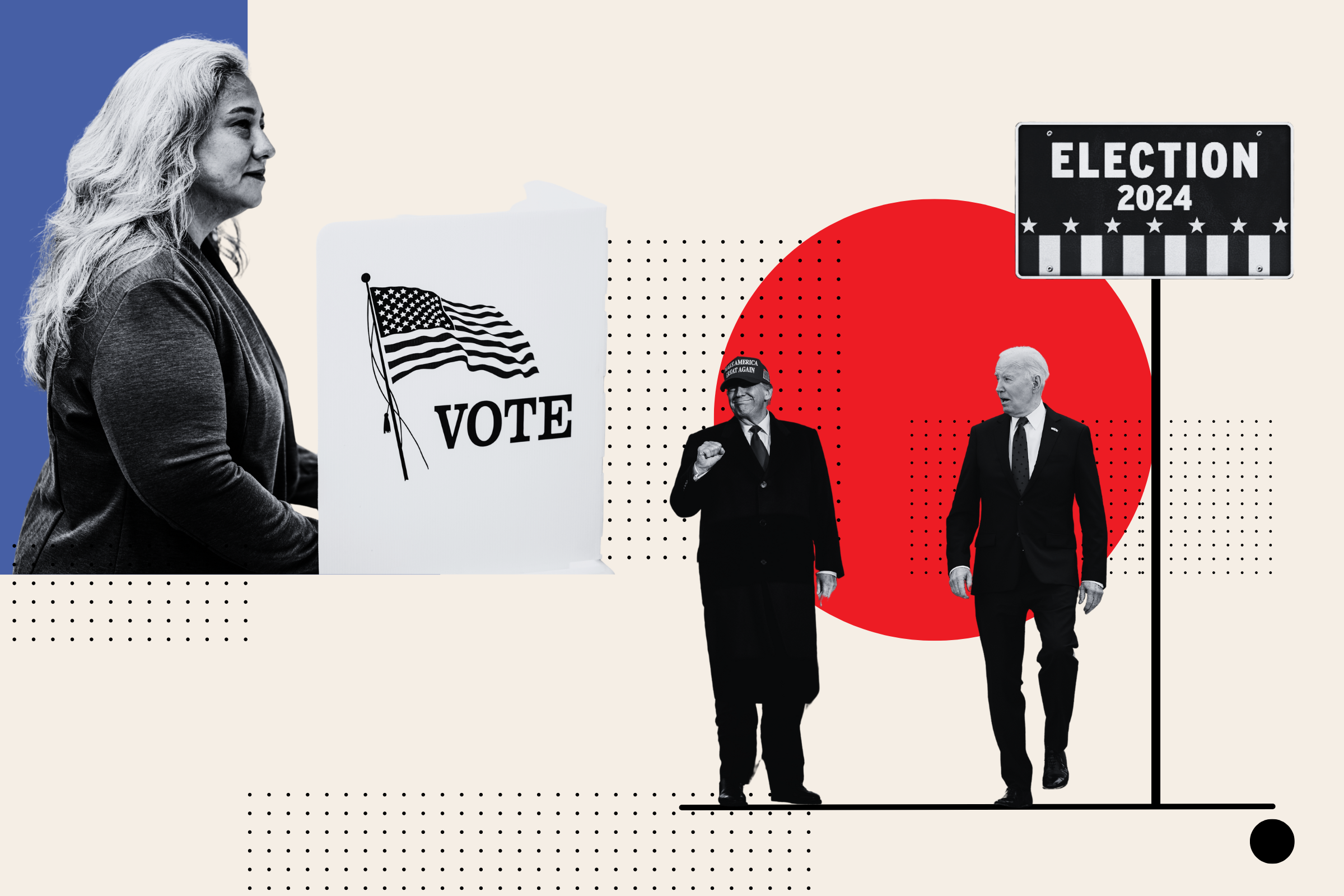
This article first appeared on the Cato Institute site.
Donald Trump's victory in the presidential election is a tremendous political upset. The biggest issue he raised was immigration—and he didn't waver from his restrictionist position.
Although the polling data don't show support for Trump's position and the election was not a blowout in terms of the popular vote, he and other restrictionist Republicans will take this as a mandate to follow through on his immigration promises.
Trump's stump speeches were superficial, but his immigration position paper was detailed and specific. Simply, it calls for a 20 percent to 60 percent cut in green cards and a huge increase in immigration enforcement. Here are the details from his immigration position paper fleshed out:
1. Border wall. The completion of a border wall, or at least 1,000 miles of it (there are about 700 miles of walls and barriers currently). This wall could be virtual, but Trump sold it as a physical barrier.
His border wall is meant to address illegal border crossings that began subsiding a decade ago and are now near their post-1970 historical low point. There is a perception of chaos on the border that doesn't reflect reality, but perception is all that matters in politics.
The best way to further reduce unlawful immigration would be to create a low-skilled guest worker visa program or expand the existing ones, but Trump's position paper precludes such a policy option.
2. Nationwide E-Verify. A mandated nationwide E-Verify system for all new hires in the United States as a means to exclude immigrants without documentation from employment.
E-Verify is an electronic eligibility system for employment verification that checks a new hire's identity information against government databases to approve or deny that person employment. My colleague Jim Harper and I published a policy paper last year detailing all of the problems this system poses, from economic, privacy, civil liberties and effectiveness standpoints.
E-Verify will add to the more than 13.48 man-hours spent by employers annually dealing with the I-9 form, unintentionally deny and delay many American workers legal employment due to inaccuracies, boost the black market in identity documents and cost billions in taxpayer and economic costs to implement.
E-Verify is also unenforced and ineffective at dimming the wage magnet in states where it is already mandated. E-Verify will fail to live up to its expectations and will be followed by calls for a national biometric identity card to seal gaps in the system.
3. End birthright citizenship. This would most likely require a constitutional amendment, although Richard Posner, a noted legal scholar, thinks it can be changed by statute.
Birthright citizenship is a lot older than the 14th Amendment and has aided in the assimilation of generations of immigrants, in contrast to the experiences of assimilation in European nations without birthright citizenship. If implemented, jus sanguinis (citizenship through blood relations) would replace jus soli as the most important citizenship law of the land—an embrace of Carthaginian over Roman values.
4. End DACA. President Barack Obama's executive action for immigrants without documentation who were brought here as children gave temporary work permits and relief from potential deportation (not a path to citizenship) to about 665,000 people.
The continuation of this program, known as Deferred Action for Childhood Arrivals (DACA), depends on the actions of the president. Although this is not spelled out in his immigration position paper, it's likely that Trump will decline to continue the program by stopping the periodic renewals required by law, thus opening up this population to deportation.
Trump's administration will also now have access to the identities of all the beneficiaries of DACA who had to submit their personal information to benefit, a source of information that could be used to more efficiently deport them. This has the potential to be a heart-wrenching humanitarian disaster for the DACA beneficiaries, their families and those of us who count some of them as friends.
5. Mandatory detention. Detain all immigrants without documentation who are apprehended while entering the United States. This policy is already partially implemented but could be greatly expanded. It would require new detention facilities similar to those used to detain unauthorized alien children from Central America at serious economic and humanitarian costs.
6. Immigration moderation. Trump's paper calls for a "pause" on the issuance of new green cards to workers abroad so that "employers will have to hire from the domestic pool of unemployed immigrant and native workers."
There were 151,596 employment-based green cards issued in 2014, and 86 percent of them went to workers already in the United States on other visas. The other 14 percent went to workers abroad. The government also issued 645,560 family-based green cards in 2014, all of which allow recipients to work in the United States.
Sixty-one percent of these family-based green cards went to immigrants who were not in the country on another visa. Depending on how you dice it, this provision could cut between about 140,000 and 540,000 green cards annually.
7. Increase prevailing wage for H-1Bs. This policy proposal will reduce the number of legal, skilled temporary migrant workers. Just over 124,000 H-1Bs were approved in 2014 for initial employment in the United States, with 85,000 of them for employment in companies and the rest in nonprofit research institutions.
These workers have an average salary of $75,000, so they do not compete with low-skilled America workers. If the minimum salary for H-1B visas was bumped up to $100,000, the number of H-1Bs hired by private companies would decrease while they would shrink for research institutions.
The 75th percentile for wage compensation for H-1B workers is $81,000. Even including all of the petitions for high-wage workers that are rejected each year, this reform would significantly shrink the number of H-1B visas issued, at an enormous economic cost.
The H-1B system is also the feeder to the employment-based green card, so any change here could disrupt future flows there, even if no other changes are made.
8. Requirement to hire American workers first. This policy would increase the regulatory cost for American companies hiring skilled foreign workers in specialty occupations. Congress considered this policy for the H-1B visa in 1990 and rejected it because the regulatory costs would be so high. If Trump is the anti-regulation candidate he claims to be, he'll reject this provision.
9. Refugee program for American children. This policy would raise the standards for refugees and asylum seekers to cut down on supposed abuse and fraud.
Trump's policy proposal would decrease humanitarian immigration by 70 percent, if trumped-up fraud statistics are to be believed. That policy, if in place in 2016, would have cut the number of refugees by about 60,000, under the worst-case scenario.
The taxpayer cost of enforcing America's immigration laws to the point where all immigrants without documentation are removed and future flows stopped would be $419 billion to $619 billion over 20 years, according to estimates by the American Action Forum. These estimates do not include the negative economic effects and lost tax revenue from a subsequently smaller economy.
The Bipartisan Policy Center estimates that attrition through enforcement policy would increase projected deficits by about $800 billion over the next 20 years. Those estimates don't include the cost to the economy and government finances of slashing legal immigration.
Alex Nowrasteh is the immigration policy analyst at the Cato Institute's Center for Global Liberty and Prosperity. He is the co-author, with Mark Krikorian of the Center for Immigration Studies, of the booklet Open Immigration: Yea and Nay (Encounter Broadsides, 2014).
Uncommon Knowledge
Newsweek is committed to challenging conventional wisdom and finding connections in the search for common ground.
Newsweek is committed to challenging conventional wisdom and finding connections in the search for common ground.
About the writer
To read how Newsweek uses AI as a newsroom tool, Click here.








